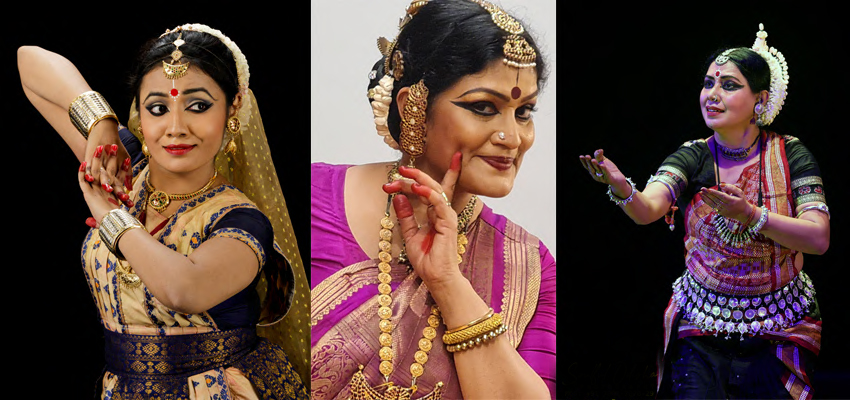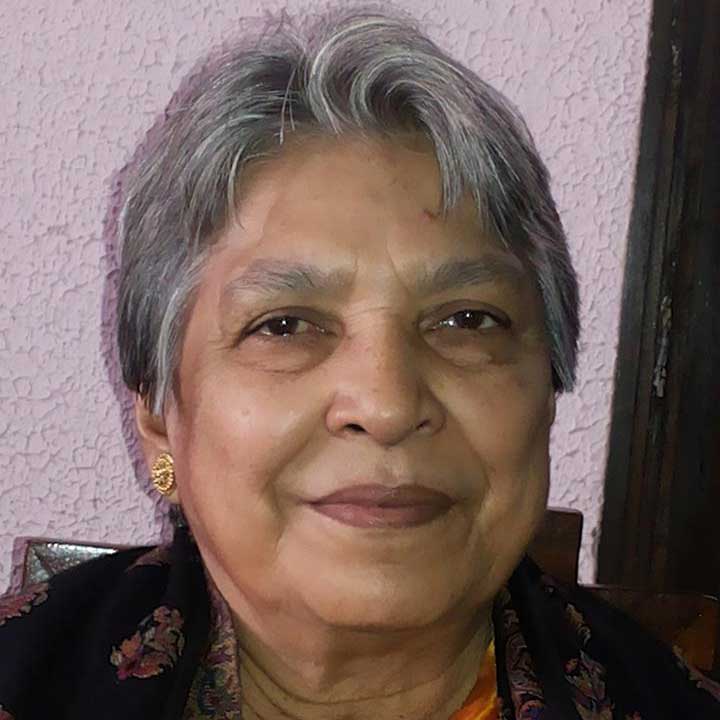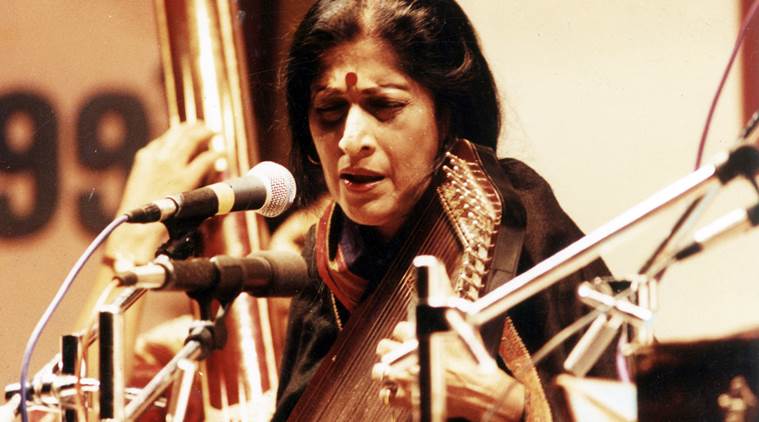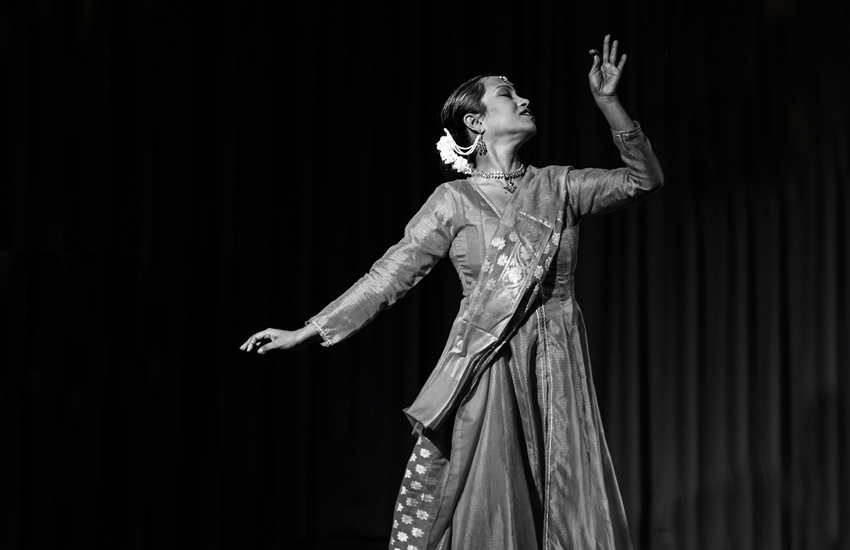Anwesa Mahanta’s brain child Kalpa -a shared society for promotion of literature, Culture and social harmony-has hosted twelve Pragjyoti International Dance Festivals so far.
Sangeeta Dutta, founder of Kalabodh collaborated with Kalpa and played a major role in this festival.
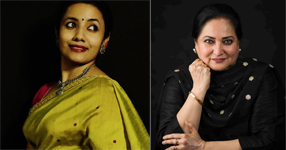
Intelligence being the ability to adjust with problematic and trying situations, human beings or rather artists in particular found innovative ways of survival during these trying times. Anwesa Mahanta’s instinct for survival as an artist made her think differently. Her 12th Pragjyoti Festival during pandemic times featured online workshops, with aspects that are of interest in the modern world. Her festival included interactive sessions and a collaborative work of films- Danslenz- under the curation of Dr. Arshiya Sethi of Kri foundation inclusive of ecology of art; climate change and the areas of Arts and the Law-a new awareness. Anwesa Mahanta had a select group of speakers talking about each of the classical dances which were documented. Anita Ratnam moderated the event. Bharatanatyam dancer Rama Vaidyanathan spoke on the topic of “Dance and Literature”. She delved deep into ancient literature to speak on Goddess Saraswati who is the source of all Arts. In fact she referred to every known literature of the country starting from ancient to modern times to showcase its intimate relation with dance. In fact she pointed out that every piece of Sahitya can be translated into dance.

Alka Pande, who spoke on Dance and Painting, spelt out the inter-connectedness of all arts-music, drawing, sculpture, poetry and dance. To learn to dance is to have a fair knowledge of all the arts. She substantiated her statement with visuals of cave paintings and other paintings; rock cut figures and temple sculptures. Alka Pande basically traced out the history of dance through paintings and how from being an activity of the community to sacred worship, graduating to Durbar and finally becoming a medium to bring out one’s personal ideas in present times.
An innovative way of unfolding the creative imagination of music composer and singer Sudha Raghuraman through Anita Ratnam’s in depth questions was most educative-Anita Ratnam is a renowned Cultural Activist and Arts Entrepreneur. Odissi dancer Ileana Citarishti explored the connection of sculpture and neo-classical Odissi dance. She threw light on the development of Odissi dance.

Scholar Kamalini Dutt introduced the topic of Natavara Krishna. She spoke of Krishna who is not only a protector but in his human form he has played many roles, who is also the ultimate trickster guiding his own destiny.
Bharatanatyam exponent Geeta Chandran opened up chapters when Krishna first entered her life through a Sabdam taught to her by Guru Swarna Saraswathy subsequently to know him more through Kshetragna Padams, poems of Bharatiyar, Oothukadu Venkatasubbaiah, Surdas, Meera and others. She demonstrated her Krishna involvement with Vatsalya Rasa, Sringar rasa and Bhakti Sringar through the lyric “Krishna nee begane baro”.
Kathakali stalwart Sadanam Balakrishna explained the role Krishna plays in Kathakali dance dramas. He said that Krishna is never the principal character in a Kathakali dance drama. Negative rasas are not identifiable with the character of Krishna, therefore he can at best be a side character. Sadanam Balakrishna has choreographed Radha Madhavam where every gopi seen dancing with Krishna is quite evocative. Sadanam’s guru Keezpadam Kumaran Nair had recommended Sopanam music for Radha Madhavam as being suitable for exploration in Kathakali and Mohiniattam jugalbandi.
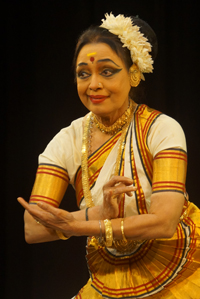
Mohiniattam performer and teacher Bharati Shivaji who is more comfortable with dancing than speaking, belied her claim and spoke at length about her pursuance of Mohiniattam in Kerala under Kavalam Narayana Paniker. According to her Mohiniattam as a dance form is best suited to portray Bhakti Sringar. She mentioned the name of Thuchathu Ramanujam Ezuthachan who translated the Ramayana and Mahabharata in Malayalam His hair to toe description of Krishna inspired her to try interpret Krishna as per her own perception. Modern poet Chengampuzha Krishna Pillai’s interpretation of Radha’s feelings about Krishna gave her food for exploration into ever fresh choreographies.
Anwesa Mahanta’s own Sattriya Guru, Guru Ghanakanta Bora was documented for what he said about contributions made by Mahapurush Srimanta Shanakar Deva and his disciple Srimanta Madhava Deva usherers of the Bhakti movement of the medieval period. Guru Ghanakanta Bora-Anwesa Mahanta’s Sattriya Guru- elaborated on the philosophy of dance centering around the Krishna theme. He narrated the important pieces of the Sattriya repertoire like the Gayan Bayan, Krishna Bandana, Guru Bandana, Natabara Krishna and the Krishna Pradhan Nritta of Sattriya dance.
Odissi Guru Aruna Mohanty’s every moment of her dance journey centres around Krshna. Her story of Krishna was etched out through her dance choreography-a piece on Krishna’s romance with the gopis shown through astapadi of Jayadeva’s Geeta Govinda, a timeless piece of literary work . What better way could there be to show Natawara Krishna. She was able to capture through her inimitable creation every bit of Krishna’s myriads of qualities.

Manipuri dance exponent Priti Patel briefly traced the history of Manipuri dance as mentioned in the Cheitharol Kumbaba and other texts and chronicled the events when Vaishnavism was first accepted in Manipur. She said that in the Manipuri form before commencing on the Radha Krishna one has to first pray to lord Pakhamba. Sankeertan singing and dancing became the main mode of worship in Maniur, in fact it became a part of life itself. Bhakti Raas or Pure devotion is what makes Manipur Raas different from all other Raas- celebrated in different parts of India. With the celebration of the first Raas, Rajarshi Bhagyachandra went on to create three Raas-Leela namely, Maha Raas, Basant Raas and Kunja Raas-Nitya Raas was created later. In the performance of Raas, rituals are strictly adhered to. Dance and music are intricately woven into the life of the people of Manipur. It was due to the efforts of Ojha Amubi Singh and Guru Bipin Singh and other gurus that the Raasleelas were recreated for the proscenium stage.
Kuchipudi exponent Vyjayanthi Kasi told the story of the innumerable visualization of Krishna in Kuchipudi Bhagatham through the various incarnation of Vishnu. She said that the stories of Krishna’s life are known as Krishna Leela have charmed the world for all times to come. Bhamakalapam of Siddhendra Yogi encapsulated the deep philosophy of the Jeevatma with the Paramatma. She observed that the Krishna Leela Tarangini of Narayana Tirtha consisting of 12 taranginis, 53 geets, 302 shlokas and numerous churnikas beginning with the coming of Krishna and ending with Rukmini Swayambharam -the longest Sanskrit opera-came at the same time as the Geet Govinda.

There was Vidushi Uma Dogra -a Kathak dancer of repute-who threw light on Kathabachan based on the life of Krishna, which marks the beginning of Kathak . Madhura Bhakti of the supreme lover . She spoke about the Astachap poets-Surdas the blind poet who was one of the eight, singing praises of Krishna . She also mentioned the inclusion of Thumri in Kathak and how Viraha is depicted through Gat Nikas and Gatbhav . Krishna is Natwari.
Danslenz was a one-of-its lind session during these unprecedented times. Being creative during lock-down is what makes a person great. Arshiya Sethi’s Kri-to do-was working overtime to do maximum good to mankind. His curation of films on the North Eastern region has been a remarkable work.
Creative artist Shilpika Bordoloi’s analogy of the flow of life to the flow of Brahmaputra accompanied with sound of the gurgling water of the river; sight of green fields and life lived on the boat created an aura providing an untold serenity. One could almost smell and touch what was going on. She held fort to a history that needs to be preserved for all it is worth.
Anjana Moyee Saikia’s hands in the clock swung from the flow of river intricately woven with the flow of life to Vaishnav Bhakti. Her film by her school Darpan Dance Company dealt with the part played by the Mahapurush Srimant Shankara Dev to usher in the Sattra culture. Glimpses of Kamalabari Sattra and its ritualistic activity and subsequent preparation for Ankiya Nat took us around like tourists exposed to the deep culture of Assam.
Aseng Borang Venus Tokchom provided a brief glimpse into the kind of music that’s becoming a vogue amongst the new generation of Assamese. Surjit Nongmeikapam’s film captured a dance form that combined many flavours from different areas or systems and the women’s markets that have been deserted due to pandemic creating chilling and deathly scenes were well put.
Anwesa Mahanta has had enough time to churn every side of the coin to examine the existing scenario of dance in these crucial times. She delved deep to explore the emotional bond with Krishna. Each and every devotee of Krishna is a sakhi. Anewsha feels Krishna’s presence in everything in his absence. It is his flute music which is audible to the true devotee which liberates them from all earthly bondage.
In her film Madhusmita Das portrayed Vaishnavism as a great equalizer amongst all creatures on earth. She used the popular song “Vaishnava Janato”, a great favourite of Mahatma Gandhi to bind one and all.
Prachi Saathi emphasized a slower life to enjoy beauteous nature.
Bharatanatyam exponent Ramya Harishankar’s ‘Hot theme for a warm climate’ was food for thought. Her film Bhumika by Arpan Dance Company in California
The 12th Pragjyoti International Dance Festival reaped the benefits of the digital world during this time when almost the entire world was virtually in a lock down state. Ideas were shared for mutual benefits. During this pandemic dancers have gone on to doing a lot of films rather than stagnating and reaching a dead end.
The festival was a interdisciplinary and Multi -destination event neatly presented in spite of its diversity. Inspite of the Climate Change and decaying environment the attempt was to create a bank of rasikas, who were in dire need of guided viewing.



